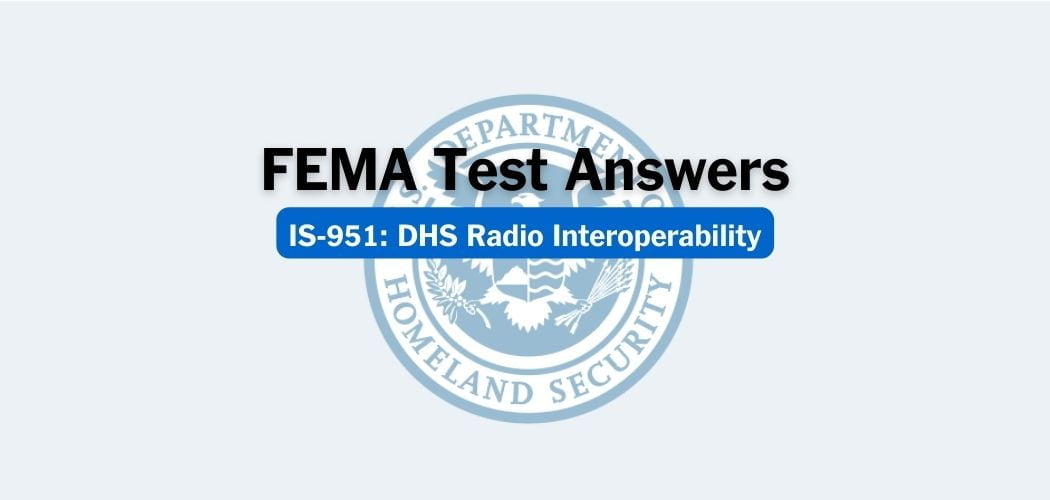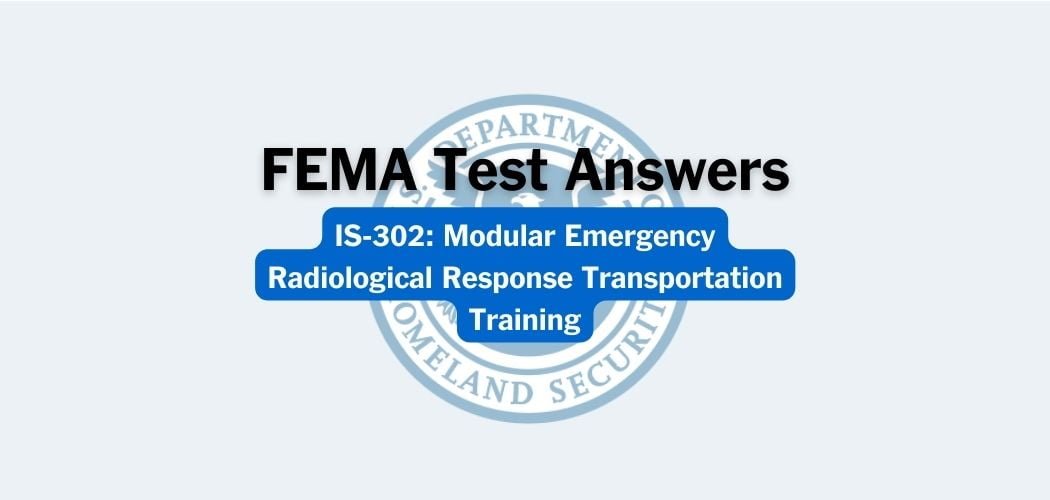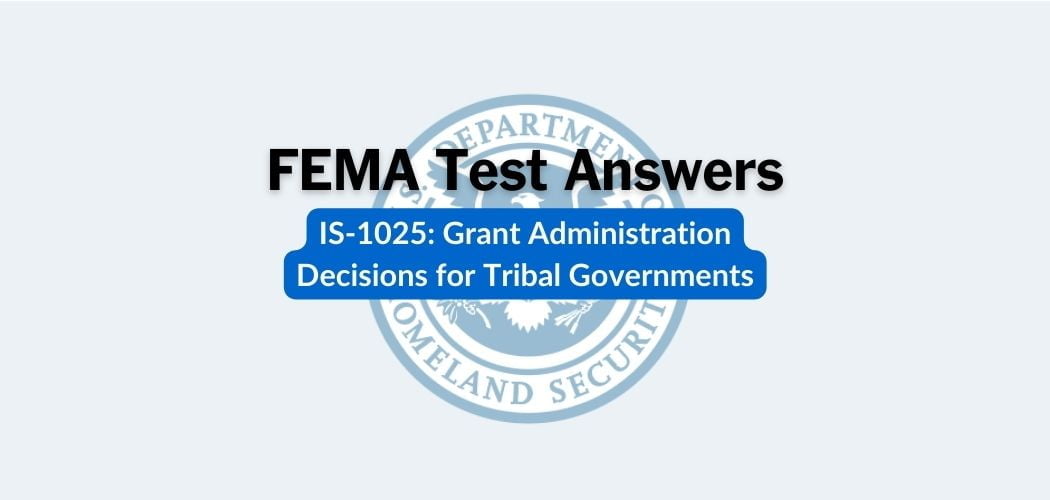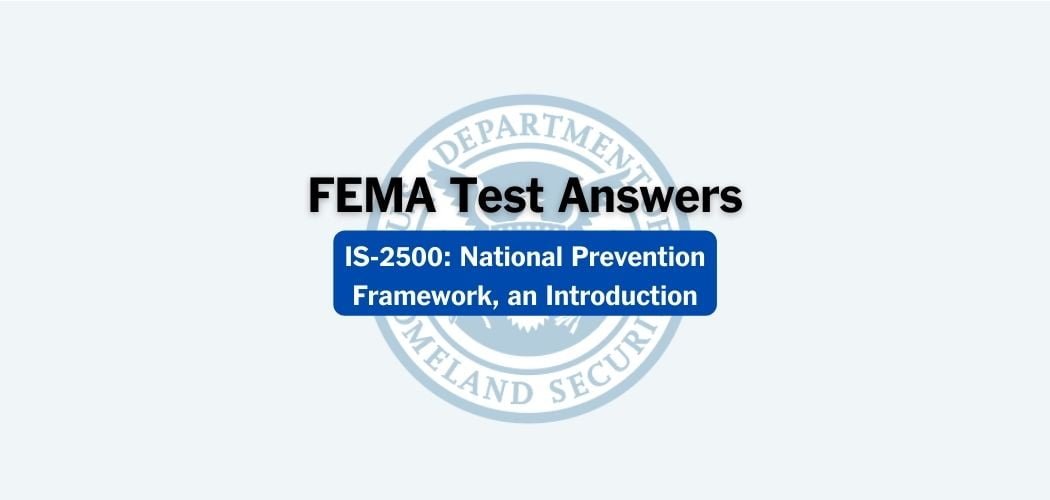Overview: FEMA IS-11.A course was published on 10/2/2015 to provide information for groups to meet and develop meaningful and effective plans that improve the care of animals, their owners, and the animal-care industries in disasters.
Primary audience: The IS-11.A course is for emergency management officials and animal owners, care providers, and industries.
FEMA IS-11.A test answers
Each time this test is loaded, you will receive a unique set of questions and answers. The test questions are scrambled to protect the integrity of the exam.
Question 1. A legal agreement among two or more local jurisdictions that plan to assist each other in cases of emergencies is which of the following?
A. Local ordinance
B. Mutual aid agreement✅
C. Memorandum of understanding
D. Local law
Question 2. Creating brochures is expensive, and NOT recommended as a way to inform the community about the emergency operations plan.
A. True
B. False✅
Question 3. Which method of carcass disposal involves mixing 1 part carcass to 2 parts litter and 1 part straw in alternate layers in a boxed, enclosed area?
A. Composting✅
B. Rendering
C. Fermenting
D. Burial
Question 4. Who is responsible for coordinating the Federal agencies and programs involved in assistance?
A. Federal Coordinating Officer✅
B. State Coordinating Officer
C. Local Emergency Manager
D. FEMA
Question 5. Adding a distinctive smell to odorless liquid propane gas is an example of what type of mitigation activity?
A. Modifying the rate or spatial distribution of the release of the hazard
B. Reducing or limiting the amount of hazard manufactured
C. Disseminating information
D. Modifying the basic qualities of a hazard✅
Question 6. During a disaster, information about a temporary animal shelter:
A. can most efficiently be communicated by posting a sign on the front door of City Hall.
B. is best communicated to the public by each separate department involved in the disaster response.
C. is most effectively conveyed by announcing it to all local veterinarians so they can inform their patients.
D. should be conveyed to the public by the Public Information Officer to ensure a coordinated and consistent message.✅
Question 7. When confronted by a dog that seems as though it is going to attack you, which of the following actions will most likely reduce the risk of being bitten?
A. Lying down and playing dead
B. Running away
C. Putting something between yourself and the dog✅
D. Yelling for help
Question 8. Emergency operations plans should not be tested in advance so that responders will react with additional energy and not be complacent.
A. True
B. False✅
Question 9. Senior citizens are a valuable source of volunteers.
A. True✅
B. False
Question 10. Animals that have been exposed to hazardous materials present no danger to people.
A. True
B. False✅
Question 11. Which of the following Federal organizations is most likely to provide assistance regarding the safety of livestock feed in a federally declared disaster?
A. Environmental Protection Agency
B. Department of Agriculture✅
C. Federal Emergency Management Agency
D. Food and Drug Administration
Question 12. Which of the following is NOT a form of assistance that may be provided following a Presidential disaster declaration?
A. Permanent housing✅
B. Legal services
C. Unemployment assistance
D. Food coupons
Question 13. Which is NOT a method of reducing the impact of floods on animals?
A. Making plans for the evacuation of companion animals
B. Creating flood protection for roads into and out of the farm
C. Identifying cost-effective methods of disposing of animal carcasses✅
D. Locating stables and other animal buildings on high ground
Question 14. The best disaster preparedness starts at which level?
A. State
B. Personal✅
C. Federal
D. Local
Question 15. Plans should respect the concerns of people who do not wish to be exposed to animals.
A. True✅
B. False
Question 16. Holding training sessions for officials with roles in the emergency operations plan is an example of approaching which of the following groups?
A. The media
B. Private-sector organizations
C. Government✅
D. The public
Question 17. Public awareness campaigns accomplish which one of the following?
A. Address hazards that may potentially affect your community✅
B. Form partnerships between emergency management and animal-care communities
C. Assign roles to various governmental agencies in emergency response
D. Plan implementation, including who is responsible for which actions
Question 18. Which of the following is NOT accounted for in community damage assessment?
A. Damages to a community’s infrastructure
B. Number of animals killed or injured
C. Personal items such as photographs✅
D. Damages to structures
Question 19. Which of the following government agencies may send veterinary medical assistance teams (VMATs) in the event of an emergency?
A. Department of Agriculture
B. Department of Defense
C. Federal Emergency Management Agency✅
D. Department of Health and Human Services
Question 20. The emergency operations plan functions as a local law.
A. True✅
B. False



